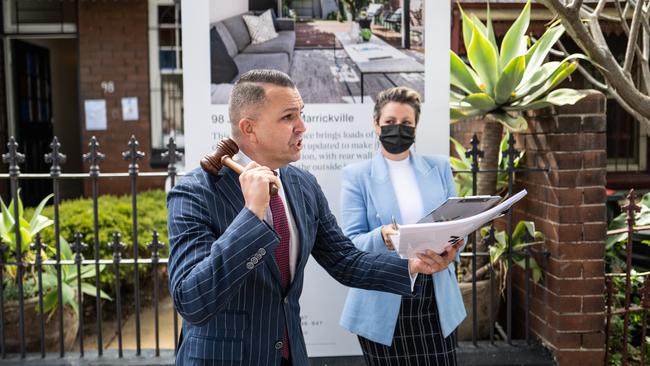RBA raises interest rates to 1.85 per cent as inflation surges still
Home loan borrowers face hundreds more in repayments as the RBA hiked the benchmark interest rate for the fourth time in as many months.
Business
Don't miss out on the headlines from Business. Followed categories will be added to My News.
The Reserve Bank has hiked rates by half a percentage point to 1.85 per cent, adding a further $140 to the monthly interest bill on a $500,000 mortgage once passed on to borrowers.
The widely anticipated move piles further pain on mortgaged households already struggling with the soaring cost of living.
The increase means the cash rate target has risen from 0.1 to 1.85 over four consecutive months.
That 1.75 percentage-point rise has sunk consumer confidence to levels consistent with previous recessions, and sent house prices into a sharp reversal following an unprecedented boom during the pandemic.

“The Board expects to take further steps in the process of normalising monetary conditions over the months ahead, but it is not on a pre-set path,” it said on Tuesday.
“The size and timing of future interest rate increases will be guided by the incoming data and the Board’s assessment of the outlook for inflation and the labour market.”
In April the official cash rate was 0.1 percent, an historical low that had remained unchanged since November 2020.
It then rose to 0.35 percent in May, then hit 0.85 per cent in June.
Today’s rise came after the RBA hiked rates by half a percentage point to 1.35 per cent in July, as the central bank raced to return monetary policy settings back to normal amid surging inflation.
New Australian Bureau of Statistics data released on Tuesday showed home lending dropped 4.4 per cent in June, while residential building approvals also eased 0.7 per cent in the month.
ANZ senior economist Adelaide Timbrell said “we expect rising interest rates and high inflation to push down demand for homebuilding and borrowing in the coming months”.
In a statement following the 50 basis point rate hike, the RBA said the “key source of uncertainty continues to be the behaviour of household spending”.
“Higher inflation and higher interest rates are putting pressure on household budgets. Consumer confidence has also fallen and housing prices are declining in some markets after the large increases in recent years,” it said.
“Working in the other direction, people are finding jobs and obtaining more hours of work. Many households have also built up large financial buffers and the saving rate remains higher than it was before the pandemic.
“The Board will be paying close attention to how these various factors balance out as it assesses the appropriate setting of monetary policy.”
The RBA said it expects inflation to take longer to decline towards it 2-3 per cent range.
“The Bank’s central forecast is for CPI inflation to be around 7¾ per cent over 2022, a little above 4 per cent over 2023 and around 3 per cent over 2024,” Governor Philip Lowe said.
This compares to Dr Lowe’s July statement, in which he said inflation would return to its 2-3 per cent range next year.
The RBA said inflation in Australia was the highest it has been since the early 1990s with it coming in at 6.1 per cent over the year to June 30.
Dr Lowe said global factors explain much of the increase in inflation, but domestic factors are also playing a role.
Dr Lowe also said employment was growing strongly, consumer spending had been resilient and an upswing in business investment was underway.
“National income is also being boosted by a rise in the terms of trade, which are at a record high,” he said.





